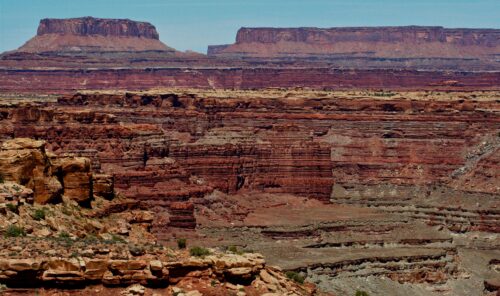The ground beneath our feet seems stable. However, over a longer time scale, the Earth is very active—tectonic forces push the outer shell of our planet back and forth, molding the crust into mountain ranges like the Himalayas. Several times throughout Earth’s history, almost all of our planet’s crust merged into a single landmass—a supercontinent. A team of geologists at the University of California, Berkeley, led by graduate student Yiming Zhang and professor of earth and planetary science Nicholas Swanson-Hysell, has been researching an ancient supercontinent called Rodinia.
Rodinia represents a significant part of Earth’s history, but scientists have faced challenges in reconstructing its movement. “[Rodinia possesses] a configuration that is quite poorly constrained. [There is] a gap in the record for three hundred million years,” Zhang said. Rodinia is much harder to reconstruct than Pangea, another famous supercontinent that formed about 175 to 335 million years ago. In the case of Pangea, scientists used patterns in the oceanic crust. For the better half of the last billion years, the Earth was covered in oceans. As the eras passed, tectonic plates and oceans shifted, leaving behind traces of oceanic crust that, when pieced together, show not only the position of the lands but also their trajectory. Unfortunately, the oldest oceanic crust is about two hundred million years old, making it impossible to apply this technique to Rodinia, which existed over one billion years ago. Therefore, Zhang needed to find a different approach to reconstruct Rodinia’s plate tectonics.
To piece together this paleogeographic puzzle, Zhang traveled to a sedimentary rock formation in Michigan known as the Jacobsville Formation, which was deposited about 990 million years ago. The Jacobsville Formation is key to determining the position of important geographic features for the region of Laurentia, the center region of Rodinia that now forms the majority of North America.
Zhang and his group hoped to uncover the magnetic histories of rock samples collected from this formation. The rock layers from the Jacobsville Formation contain grains of a mineral called hematite, which carry records of the Earth’s magnetic field. When these hematite grains settled into sediments, they aligned themselves with the North Pole. The sediments eventually lithified into sedimentary rocks, preserving a record of Earth’s magnetic field at the time of formation. By following changes in Earth’s magnetic field back in time, Zhang could narrow down the location and orientation of Laurentia. His group concluded that Laurentia rapidly traveled from high latitudes to the equator, culminating in the assembly of continent-scale mountain ranges.
Zhang’s research provides key insights into understanding prehistoric Earth. “Following the timing of the Rodinia breakup, Earth went through some extreme events, one of them being the climate catastrophe. About 717 million years ago, Earth was a complete snowball,” Zhang said. By pinpointing the location of Rodinia, we might be able to determine if large-scale volcanic eruptions may have caused this era in Earth’s past. Now, Zhang is researching rock formations in Minnesota, helping him further piece together the ancient world.

